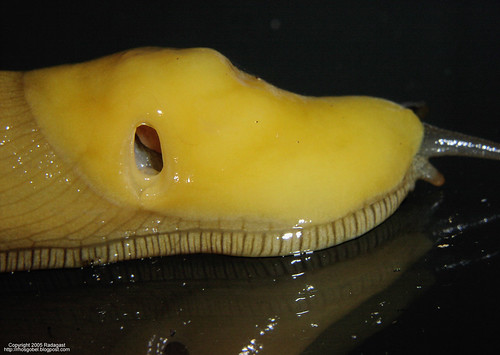
A slug with its pneumostome clearly visible
While my prior picture (seen here) showed the overall head anatomy, this one highlights the slug's pneumostome. The pneumostome is an opening in the slug's mantle tissue that lets air into the slug's mantle cavity; inside the mantle cavity the slug has a highly vascularized section of tissue that functions as a lung.
Both slugs and snails have pneumostomes; on terrestrial snails they're located at the tissue covering the opening at the base of the shell (on the right-hand side, as with slugs). The pneumostome is not an anus; the anus is a much smaller opening located (on slugs) under the mantle behind the pneumostome.
As with insects (which use trachea and spiracles to respire), slugs and snails separate respiration from ingestion (which conveniently prevents choking). Pneumostomes can be opened and closed by both slugs and snails; I always like to imagine the cute little gastropods huffing and puffing when their pneumostomes are open.
Hickman et al. 2004. Integrated Principles of Zoology, 12th edition. McGraw Hill.



No comments:
Post a Comment